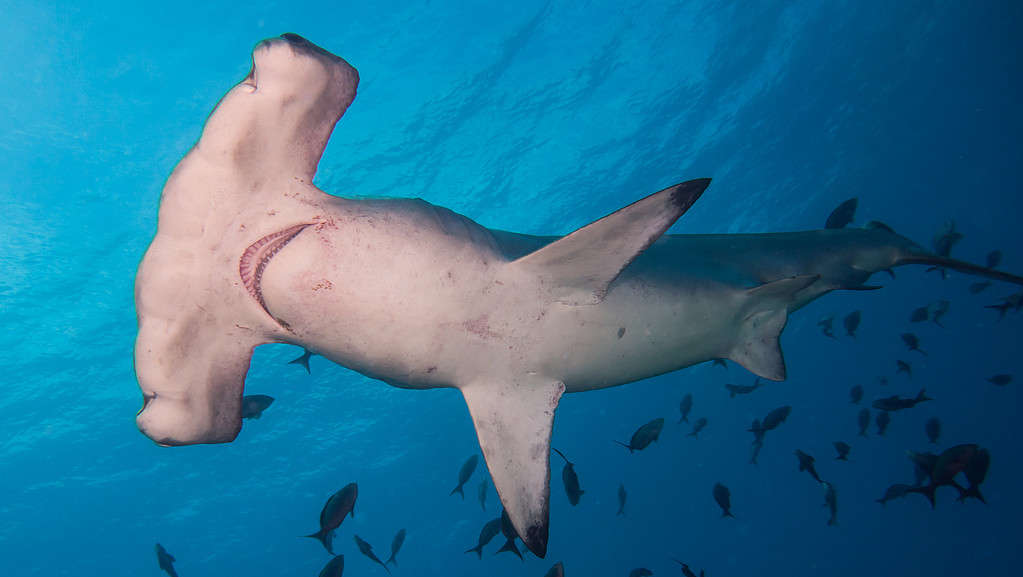Scalloped hammerhead sharks (Sphyrna lewini) can hold their breath to keep their bodies warm during deep dives into old water to hunt prey, according to a new study. The finding offers valuable insights into the behavior of this species, which plays a significant role in connecting deep-sea and shallow-water habitats, the researchers said.

Many fish and marine mammal species are known for their ability to dive from the warm surface into deeper waters to hunt. However, ectothermic creatures, or “cold-blooded” animals, such as sharks, face many obstacles in maintaining their body temperature. They must find a way to conserve heat in order to sustain an active metabolism for hunting.
Sharks have gills that function as natural radiators, capable of quickly cooling their blood, muscles, and organs. However, during deep dives into colder water, where they feed on other marine creatures, they must close their gill slits to maintain body warmth and ensure efficient hunting. This has raised questions among researchers.
“This was a complete surprise,” Mark Royer, lead author and researcher at the Hawai’i Institute of Marine Biology in the UH Mānoa School of Ocean and Earth Science and Technology, said in a statement. “It was unexpected for sharks to hold their breath to hunt like a diving marine mammal. It’s an extraordinary behavior from an incredible animal.”
Shark’s surprising behavior
For their study, the researchers equipped a group of scalloped hammerhead sharks with devices that measured their muscle temperature, depth, body orientation, and activity levels. They saw that the sharks’ muscles stayed warm during their dive into cold water but suddenly cooled as the sharks approaches the surface toward the end of the dive.
The sharks dived several times into deep water at a temperature of 5–11 °C — 20 °C colder than at the surface — and remained there for five to seven minutes at a time before going back to the surface. Computer modeling suggested that the sharks are preventing heat loss from their gills to keep their bodies warm during their deep dives into cold water.
The researchers also captured video footage of sharks swimming at 1,044 meters below the surface with tightly closed gill slits. In contrast, similar images in surface waters show these sharks swimming with their gills wide open. A sudden cooling in muscle temperature as the sharks reach the surface after each dive suggests they opened their gills to resume breathing.
“Holding their breath keeps scalloped hammerhead sharks warm but also shuts off their oxygen supply,” said Royer. “So, although these sharks hold their breath for an average of 17 minutes, they only spend an average of four minutes at the bottom of their dives at extreme depths before quickly returning to warmer, well-oxygenated surface waters where breathing resumes.”
Scalloped hammerhead sharks are regionally endangered in many parts of the world due to overfishing, bycatch, and nursery habitat loss. This new study improves our ability to better manage the species by revealing potential vulnerabilities linked to changing ocean conditions or future human exploitation of these deep habitats, the researchers said.
The study was published in the journal Science.


